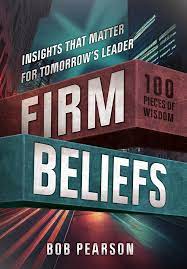5 TAKEAWAYS:
- People trust who they know, not traditional authority figures. As trust plummets in the news, the government, religion, science and other institutions, social media influencers have become more trusted. They appeal to our attention spans, which have shortened to just 1 to 3 seconds, and the personalities they bring to the platforms make us feel as if we know them, said Bob Pearson, chair of the Next Practices Group, a digital media consulting company.
- The best disinformation looks like information. The rise in social media influencers coincides with a rise in disinformation spread on those platforms. While there is a range of disinformation, from outright lies to real content laced with fake context, it is the latter that Pearson deems most likely to deceive. “What I worry about more is misleading content … you can use software today where you could create content on a topic right now, have 95% of it be accurate, but just put it in one part of a quote that’s wrong, or put in one fact that’s wrong. If I wanted to disinform a society longer term, I could do it in a way that people probably wouldn’t even spot the disinformation,” Pearson said. “We have to get increasingly sophisticated at how we do this because the best disinformation looks like information.”
- New forms of censorship are creeping up unnoticed. Censorship was once blunt: Governments prohibited speech or publication or confiscated, punished, or more recently deleted what was published. But just as disinformation has grown more sophisticated, so has censorship, Pearson noted. “Censorship is starting to occur in ways that we don’t realize, where you can actually censor people without them even being fully appreciative they’re being censored,” he said. For instance, individual or professional accounts can be “shadow banned,” meaning their content is suppressed by a platform’s algorithm. They are effectively silenced to their intended audiences, who are typically unaware that they are being deliberately prevented from seeing new content.
- What can a journalist do in the face of eroding trust, disinformation and censorship? Be real. Pearson advises journalists to take a “the best defense is a good offense” approach in the face of increasingly complex threats. Audiences are more likely to respond to human beings than brands. He encouraged journalists to share from their own social media accounts with consistency, regularity and authenticity. Even brief posts can build trust and connection, increasing your reach. Asked specifically about how to reach audiences hostile toward journalists, Pearson encouraged reporters not to give a platform to anyone who willfully spreads false information. Rather, look to the less ideological crossover influencers who may be open to spreading your accurate content if they deem it relevant. “How do you actually bring them into your world? Do you invite them in to be quoted in one of the articles you’re doing? They’re now going to talk to their audience about it, and you’re expanding the reach of what you’re doing.”
- Make use of the 1:9:90 media model. Finding the people who are driving any given conversation is key, Pearson explained, because 1% create the content (for instance, journalists), 9% share and repackage content, and 90% consume content. Journalists need to reach the right 9% to spread the accurate information they are working to produce. This requires a deep understanding of the target audience, the language and channels they use and the influencers they listen to. “For any topic that we have in the United States, you will see that there are not more than 50 people who drive the majority of share of conversation,” he said. These could be journalists, social media influencers, or anyone whose audience cares enough about the message to share it. “If you think about what creates influence, it is not volume, it is engagement.”
Speaker:
Bob Pearson, CEO, The Bliss Group; Chair, The Next Practices Group
This program was funded by the Evelyn Y. Davis Foundation. NPF is solely responsible for the content.
